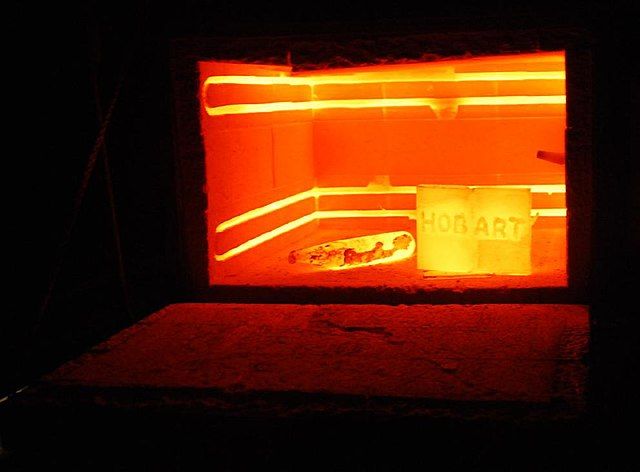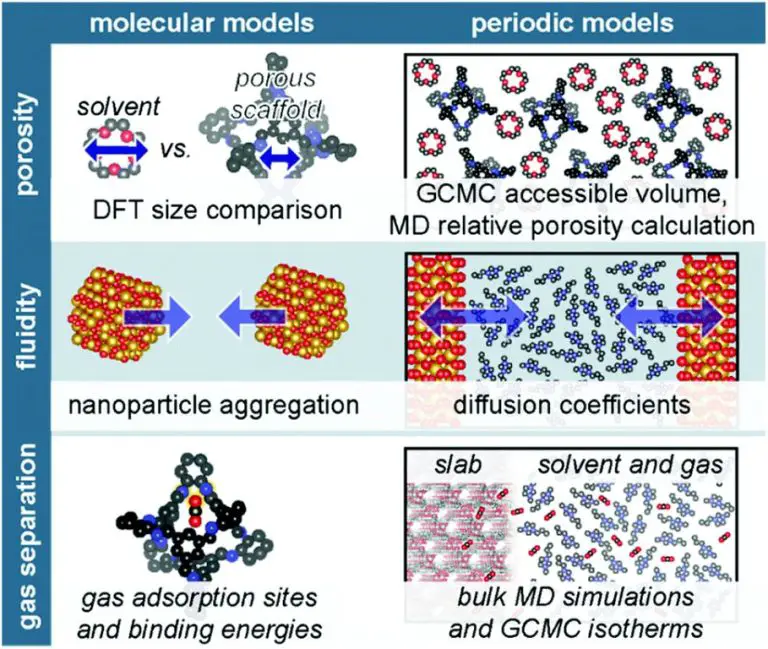Why Is Cuo Called Copper Ii Oxide?
Introducing Copper Oxide
Copper(II) oxide, also known as cupric oxide, is an inorganic compound with the chemical formula CuO. It is commonly referred to as copper oxide or just simply copper II oxide. The compound consists of the metal copper bound to oxygen atoms in a 1:1 ratio, as indicated by its chemical formula CuO.
Copper(II) oxide is a black solid with a monoclinic crystalline structure. At elevated temperatures, it can reversibly dissociate into copper metal and oxygen gas. It exhibits basic character and dissolves in acids to form copper(II) salts.
Copper(II) oxide has a number of specialized applications due to its properties as a semiconductor, including use in gas sensors, high-temperature superconductors, and solar energy absorption coatings. It also has uses as a pigment and catalyst.
Oxidation States of Copper
Copper is a transition metal that exhibits variable oxidation states in its compounds. The two most common oxidation states of copper are +1 and +2.
In the +1 oxidation state, copper has a 1+ charge and is called copper(I). Compounds with copper(I) tend to be colorless. In the +2 oxidation state, copper has a 2+ charge and is called copper(II). Compounds with copper(II) are often blue or green.
The ability of copper to exhibit these different oxidation states is due to the electronic configuration of the copper atom. Copper has the electronic configuration [Ar] 3d10 4s1. The 4s electron is lost first during ionization, leaving a 3d10 configuration behind. This 3d10 configuration allows copper to exist stably with a +1 or +2 charge, leading to its two common oxidation states.
For example, in Cu2O copper(I) oxide, the copper ions are Cu+ with the 3d10 configuration. In CuO copper(II) oxide, the copper ions are Cu2+ after losing two electrons to form the 3d9 configuration.
The existence of multiple positive oxidation states gives copper and its compounds unique chemical and physical properties critical for various applications.[1]
Naming Metal Oxides
The naming of metal oxides follows a systematic approach based on the oxidation state of the metal. Oxidation state refers to the charge the metal atom would have if all the ligands attached to it are removed along with their electrons.
For example, in copper(II) oxide (CuO), the copper ion has a +2 oxidation state. This means if the oxide ion (O2-) was removed, the copper ion would have a 2+ charge. The Roman numeral II in copper(II) oxide signifies the +2 oxidation state of copper.
On the other hand, in copper(I) oxide (Cu2O), the copper ion has a +1 oxidation state. If the oxide ion was removed, the copper ion would have a 1+ charge. The Roman numeral I indicates the +1 oxidation state of copper.
Therefore, the naming convention for metal oxides is: Metal (oxidation state) oxide. The oxidation state of the metal is indicated by its Roman numeral in parentheses. Higher oxidation states are usually named first, followed by lower oxidation states.
For example, iron oxide is called iron(III) oxide instead of iron(II) oxide because Fe3+ is a higher oxidation state than Fe2+. The oxidation state naming allows chemists to differentiate between oxides of the same metal in different states.
Copper(I) vs Copper(II)
The key difference between copper(I) and copper(II) lies in their oxidation states. Copper has two common oxidation states: +1 and +2.
Copper(I), commonly written as Cu+, has an oxidation state of +1. This means copper has lost one of its 4s1 valence electron, leaving it with a full 3d10 subshell. Compounds with Cu+ tend to be colorless.
In contrast, copper(II), or Cu2+, has an oxidation state of +2, indicating it has lost two 4s1 valence electrons, leaving an incomplete 3d9 subshell. Cu2+ compounds are often blue or green.
Copper(I) is unstable in aqueous solution and readily oxidizes to copper(II) which is more prevalent in nature. Cu2+ forms more stable complexes and is found in minerals like azurite, malachite and cuprite. It has antiseptic and antibacterial properties, making it useful for sterilizing surfaces and purifying water [1].
Meanwhile, copper(I) compounds like copper(I) chloride are used as reagents in chemical synthesis and analysis. The monovalent copper ion also plays important biological roles in electron transport proteins.
Structure of Copper Oxide
Copper(II) oxide has a monoclinic crystal structure with a C2/c space group. The unit cell contains 4 CuO formula units. Each copper ion is coordinated to 4 oxygen ions in an approximately square planar configuration.
The lattice parameters of CuO are:
- a = 4.684 Å
- b = 3.422 Å
- c = 5.129 Å
- β = 99.54°
The copper and oxygen atoms are arranged in layers stacked along the c-axis direction. Within each layer, the copper atoms adopt a distorted tetrahedral coordination geometry with oxygen atoms. Adjacent layers are held together by weak van der Waals forces resulting in the layered structure of CuO with easy cleavage planes perpendicular to the c-axis.[1]
The crystalline structure of CuO enables its use in gas sensing applications due to availability of surface oxygen atoms.
[1] https://en.wikipedia.org/wiki/Copper(II)_oxide
Preparation of CuO
Copper(II) oxide can be prepared by several different methods. Some common synthesis routes include:
Direct thermal decomposition of copper(II) carbonate, copper(II) hydroxide, or copper(II) nitrate:[1]
2 CuCO3 -> 2 CuO + CO2↑
2 Cu(OH)2 -> 2 CuO + H2O
2 Cu(NO3)2 -> 2 CuO + 4 NO2 + O2
Precipitation reactions by adding a base to a solution of a copper(II) salt:[2]
CuSO4 + 2 NaOH -> Cu(OH)2 + Na2SO4
Cu(OH)2 -> CuO + H2O
Electrochemical anodic dissolution of copper metal in aqueous sodium hydroxide or sodium carbonate solution:
Cu + 2 OH- -> Cu(OH)2 + 2e-
Cu(OH)2 -> CuO + H2O
Copper(II) oxide can also be produced by heating copper metal in air at around 300-600°C. The initial product is copper(I) oxide which then reacts with oxygen to form copper(II) oxide:
2 Cu + O2 -> 2 CuO (copper(I) oxide)
Cu2O + 1/2O2 -> 2 CuO (copper(II) oxide)
Properties of Copper(II) Oxide
Copper(II) oxide is a black to brown powder at room temperature. It has a high melting point of 1,326°C (2,419°F) and a very low solubility in water. Some key properties of CuO include:
- Color – Black to brown powder
- Melting point – 1,326°C (2,419°F) (1)
- Boiling point – 2,000°C (3,632°F) (1)
- Density – 6.3-6.49 g/cm3
- Solubility – Insoluble in water, soluble in acids and ammonia (2)
The black color of CuO powder is due to the presence of Cu2+ ions. These have a d9 electronic configuration which results in unpaired electrons that can absorb wavelengths in the visible range, causing the black color.
The high melting point is indicative of the strong ionic bonding between the copper and oxide ions in the CuO lattice structure. The insolubility in water is common for metal oxides.
Overall, the properties of copper(II) oxide reflect its stable ionic structure and high thermal stability.
(1) https://pubchem.ncbi.nlm.nih.gov/compound/Copper-oxide-_CuO
(2) https://www.americanelements.com/copper-ii-oxide-1317-38-0
Applications of Copper Oxide
Copper(II) oxide has several important industrial applications. One of the most common uses is as a pigment in ceramics and glazes, where it provides a distinctive black or red color depending on the oxidation state and particle size (source). The compound is also utilized as a precursor to synthesize other copper compounds and as an ingredient in magnets, lithium-ion batteries, gas sensors, and superconductors.
![]()
The semiconductor industry relies on copper oxide thin films for applications in solar energy conversion, electrodes, and photodetectors. CuO films exhibit p-type semiconductor behavior and have a bandgap in the range of 1.2 – 1.9 eV, making them well-suited for photovoltaic solar cells (source). Doping CuO with metals like iron improves conductivity for electrode materials.
As a catalyst, CuO shows activity for various reactions including oxidation, hydrogenation, dehydrogenation, and coupling reactions. Nanoscale CuO is particularly effective as a catalyst support and promoter in applications like methanol synthesis, water-gas shift, CO oxidation, and degradation of volatile organic compounds (source). The high surface area and oxygen mobility of copper oxide nanoparticles enhances catalytic performance.
Toxicity and Environmental Effects
Copper oxide nanoparticles (CuO NPs) have been found to have toxic effects on various organisms when released into the environment. According to research by Ramskov et al. (2014)[1], CuO NPs are especially toxic to aquatic organisms like algae and daphnia. The toxicity is related to the dissolution of CuO NPs and the release of copper ions. Liu et al. (2018)[2] note that wastewater effluents, direct discharges or accidental spills can lead to CuO NPs entering water systems, potentially harming aquatic life. CuO NPs can also have negative effects when released into soil systems. Research by Wu et al. (2022)[3] found that CuO NPs decreased soil pH and altered the microbial community composition in soil. More research is still needed on the specific mechanisms and long-term ecological effects of CuO NP toxicity.
In terms of human health, inhalation of CuO NPs has been linked to inflammation and toxicity in the respiratory system in animal studies. There are still many unknowns about the human health impacts of CuO NPs, but the toxicity to aquatic organisms and potential respiratory effects demonstrate the need for careful environmental and health risk assessment for these nanoparticles.
Conclusion
CuO is called copper(II) oxide because copper has an oxidation state of +2 in this compound. The name indicates that copper has lost two electrons and is present in the +2 oxidation state. The roman numeral II in parentheses specifies the charge on the copper ion. This naming convention is used for all metal oxides, where the metal ion charge is designated by a roman numeral in parentheses. CuO contains copper in its highest stable oxidation state of +2.
In summary, CuO is classified as copper(II) oxide due to the +2 oxidation state of copper within the compound. The II distinguishes it from copper(I) oxide which contains copper in the +1 oxidation state. Proper naming of metal oxides requires indicating the metal ion charge, which for CuO is +2 as denoted by the (II).





